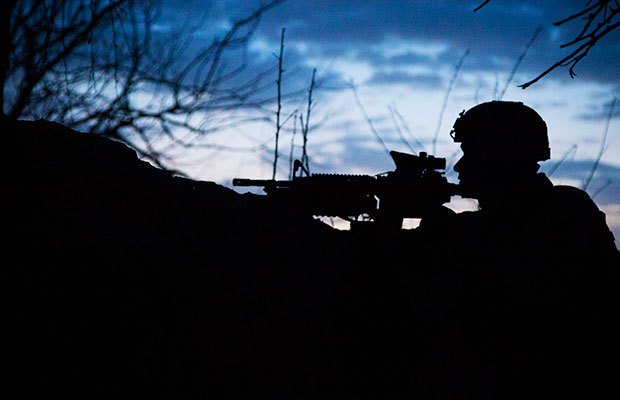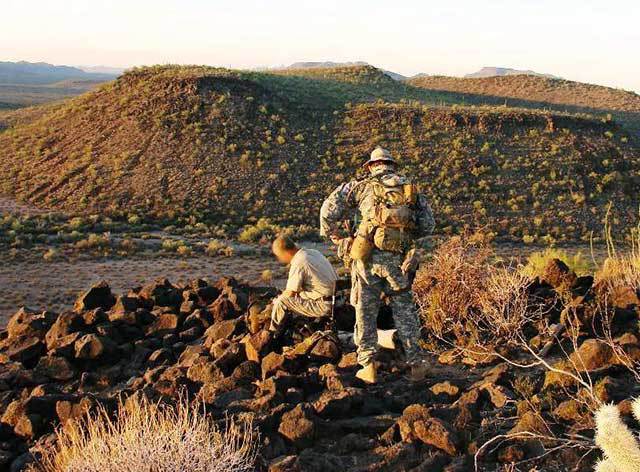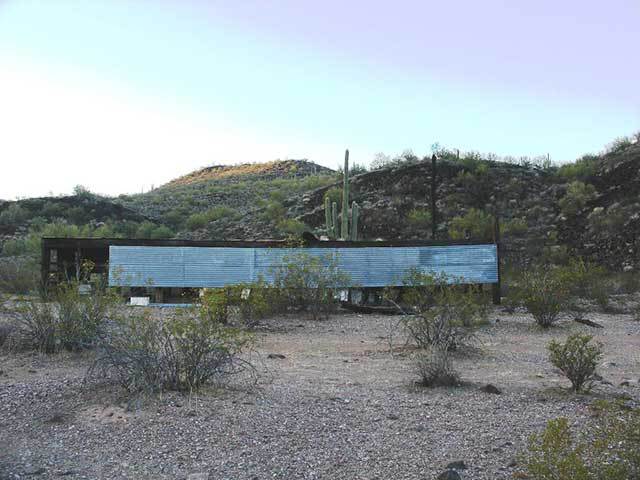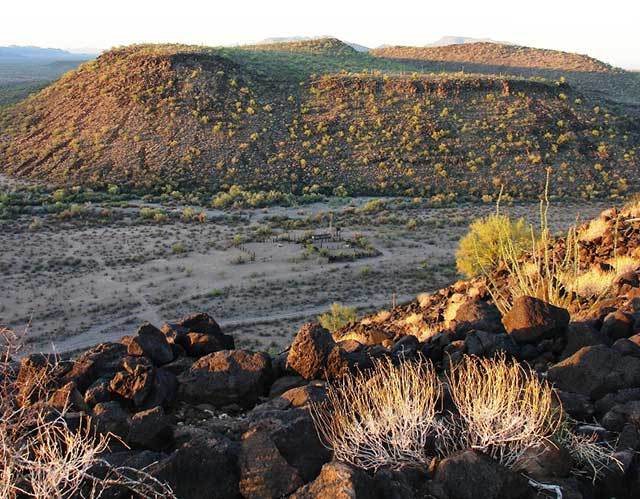
Introduction
“When the system breaks down, we all break down.” – Sgt. Barnes – Platoon
Tactical camping is a great way to develop and sharpen many essential survival skills. But, beyond these skills there is a particular discipline that needs to be practiced; one that will improve your ability to travel through unfamiliar or potentially unfriendly territory during dangerous times if circumstances should require it. Most people don’t think about evading detection because their day to day lives don’t depend on it.
To my way of thinking, there are three issues that risk the safety and obscurity of a group in camp. These are visibility, noise, and odor. I will leave it to you to visualize the circumstances under which these risks might apply, but the general scenario is that you are on the move between points A and B of indeterminate distance. Whether you are alone or traveling in a group, on foot or caravanning with several vehicles, the issues are the same.
Importantly, I am excluding urban or other densely populated areas from this discussion. They are not in my field of expertise and frankly, I don’t spend much time thinking about cities. My presumption is that you have successfully evacuated from an urban/suburban location and are traveling through rural, less populated country.
As a Prepper, you either already have a plan or you are working on one. It should mean you have a rally point where your group will assemble, that you and everyone else know the route to the destination and that you have pre-established way-point locations where you will lay up while en route to that chosen destination. It will mean that you have taken congestion and potential roadblocks into consideration. Finally, it will mean that you have evaluated fall-back sites and alternate routes that may be needed to reach your objective.
The thrust of the title is that you need to be a ‘hole in the dark’ for all three issues. In other words, an apparently dark camp can still be exposed by excessive noise, the odor of drifting smoke or food preparation. What techniques can you employ to establish and maintain a profile that is ‘dark’ to all aspects of the human senses?
Abandoned structures can be ideal locations for concealing a tactical camp. In this photo, six vehicles are parked behind an abandoned beehive that is about 100 yards away from a 2-track road.
But first, what is the best time of day to be on the move with a group? The answer will most likely be based upon the group’s overall capabilities, the tools, and resources at your disposal. If you opt to travel only at night, but you have no night vision goggles, then your rate of travel may be exceedingly slow. It will be further hampered in rough terrain where you are required to distinguish safe from unsafe trails. My general bias is to move in daylight and camp at night, but there are conditions, such as familiar terrain, ample moonlight and an experienced team that I’m working with, where I would flip the preference.
The discussion that follows reflects my bias for laying up at night. I have practiced these disciplines under a variety of weather and terrain conditions, both singly and in groups ranging up to a dozen people.
Establishing a ‘dark’ camp:
- Seek locations that are as secluded as possible. This means that you are consciously separating your group from the Golden Horde. Circumstances created by a SHTF situation dictate that you avoid Interstate highways and all other major routes that lead to your chosen destination.
- Seek locations that provide the best possible concealment for the entire group, whether natural or man-made. In the case of structures, think of a vacant barn, warehouse or a walled compound. For outdoor settings, think of places where concealment is provided by terrain, dense vegetation, or structures that will obfuscate. One such example might be on the backside of an abandoned corral. Open-air campsites need to be located beyond the range of approaching headlights.
- Strive to set your camp well before sundown so that you have enough light and time to prepare a dark camp. This means that you are establishing lay up sites that are close enough to reach in the time you have allotted for each day’s travel. It implies that these are preselected locations that you have already evaluated to some degree. The time required to set a secure camp may vary at each location along the route.
Night vision would allow you to move without external illumination and hides your location from others.
- Have time to deploy or create necessary obfuscation, such as camouflage. The absence of sunlight is not a guarantee that your camp is safe from detection. Although there may be a low probability, consumer-grade thermal/infra-red cameras can spot exposed camps and vehicles at distances greater than one mile. If thieves are on the hunt for vulnerable groups, an exposed campsite becomes an easy target.
- Have time to set a security perimeter that maximizes your ability to detect any approaching threat. Elevated lookout or observation posts (LP/OP) give you a decided advantage during night time hours, as well as the ability to spot traffic or groups during pre-dawn and after sunrise. If possible, locate these posts on the military crest. Time your travel to and departure from the LP/OP(s) so that you are moving in low light and shadow. Elevated security posts can be at any distance as long as you can maintain a clear line of sight of the area that you need to monitor. Obviously, communication between your camp and LP/OP(s) will require the use of two-way radios.
- Prepare your evening meals and clean up before dark. In these circumstances, you will want your cooking fires out and cold before dark. Avoid the use of wood or charcoal fires where possible, or use devices like the Rocket Stove, which require a minimum quantity of biomass and burn hot enough to limit the output of smoke. Do not prepare your morning meals until daylight to keep fires from being visible. This is not a backyard hamburger cookout. Drifting smoke and the smell of food may alert others to your presence.
- Stow non-essential camp items before dark to prevent accidental noise.
- Each morning, break down your camp and stow gear as quickly as possible. This should be an assigned task. Remember, your security team members will be returning to camp. Every step they take downhill reduces their visibility to approaching vehicles or groups and progressively shrinks your security perimeter. Once they reach your camp the entire group may be effectively blind to any threat. Be prepared to move out before you have to.
In situations where complete concealment is not possible, your camp can be effectively obfuscated by using features that break up the profile. In this photo, corral posts and rails, an abandoned well and native brush served to mask the presence of a camp.
- Cover and conceal all vehicles to prevent moon glow. I cannot emphasize this enough – I know of surveillance operations that have ‘gone south’ because a subject was able to detect the glint of moonlight on a partially covered windshield.
- Extinguish all outside light. If it becomes necessary to illuminate something, such as the inside of a backpack, use a low lumen light with red filter.
- Set the dimmer switches in your vehicles to the off position. This will eliminate escaping light if you need to open a door after dark.
- Cloak any vehicle that may be used as an Op center where interior lighting may be required. To be effective, this requires using opaque blankets that shroud all possible sources of light leakage.
- Strictly avoid the use of flashlights for signaling. In other words, restrict communication to radios with headsets, but keep your traffic to a minimum. Avoid popular GMRS/FRS frequencies that can be monitored by others within range. Use the lowest power output possible. [I use programmable dual band (VHF/UHF) two-way radios that permit me to transmit and receive over GMS/FRS/MURS frequencies, but I also have my own SHTF frequencies that would be used by the group. This helps to assure that you are ‘dark’ to the radio spectrum that is most likely to be used by others.
- Constrain all movement to the absolute minimum at night. If I am standing a watch between 00:00 and 02:00, there are only two people that I expect to see, the person I relieve at midnight and the one who relieves me at 02:00. Don’t wander around in the dark. Otherwise, you are a safety hazard to yourself and others.

An effective security perimeter is not constrained by two dimensions. This photo shows a surveillance LP/OP that was located on a hilltop 300 feet above and 1100 feet away from the corral shown in the previous photo. Locations such as these can provide a significant tactical advantage. Communication between the LP/OP and camp were maintained via radio.
Other Contingencies
I am somewhat reluctant to open this subject, but the exposures are real enough and they are played out every night along the Southwest border with Mexico.
If you envision bug out circumstances that tend toward the extreme, such as attempting to move through an area after martial law has been declared, there will be other considerations that apply to concealment. For example, the government could enforce martial law over large areas through the use of surveillance aircraft equipped with thermal cameras, FLIR and ground surveillance radars that detect motion against a stationary background.
In case it hasn’t occurred to you, the Department of Homeland Security already uses hundreds of fixed and rotary wing aircraft, a fleet of Predator UAVs, mobile vehicles and portable manned surveillance equipment. These are used to detect and apprehend smuggling groups along the U.S./Mexico border. Under conditions of martial law, some of those assets could be redirected to the detection and apprehension of citizens. In circumstances such as these, you could be dealing with a potentially hostile and/or desperate populace as well as a government that wants to find you. Their motivation may not be particularly humanitarian.
The type of surveillance aircraft referenced above has the ability to detect heat signatures at distances of fifteen miles or more. They can differentiate between you and a warm rock. They can detect a stationary vehicle, even though the engine hasn’t been running for two or three hours. They can detect your movement, course, and speed. If that isn’t enough, their thermal cameras are capable of identifying if you are carrying a long arm.
Fixed-wing aircraft generally operate at altitudes of 8,500 to 10,000 feet, while Predator UAVs typically patrol at altitudes ranging between 19,000 and 21,000 feet. Generally speaking, all of these aircraft are quiet and they patrol without running lights. In other words, you will not see or hear a surveillance aircraft that is orbiting your position from seven miles out.
Most nighttime detections occur where groups are laid up or moving across open ground or along ridgelines.
Against these capabilities, the basic concepts of maintaining a dark camp require added precautions; particularly if you are outdoors.
- You may need to consider setting camp in an area that provides dense overhead cover and that is in a narrow confined area, such as a ravine or draw. Your heat signature can be significantly reduced by the overhead cover. The steep angular nature of the terrain will help prevent detection from long range. Ideally, you will want to be inside an enclosed structure; one that has a roof.
- Setting camp against a cliff, particularly if there are overhangs or shallow caves, can mask you from surveillance.
- The heat that is radiating from a vehicle (especially the engine block) is much more problematic. One suggestion is to open the hood as soon as you’ve concealed the vehicle. This will help dissipate heat more quickly. Parking under dense tree cover will also quickly lower the overall temperature of the vehicle. Avoid covering the vehicle with heat-trapping blankets, tarps and camo netting until it has reached the ambient temperature of the air.
I have not experimented with heat cloaking devices, so I cannot make recommendations regarding the efficacy of any product or technique. If anyone has experience or suggestions on this subject, I am all ears.
The probability of surveillance aircraft being deployed during or after a major SHTF scenario (that is, one that pulls large numbers of CBP aircraft away from the border) is probably very low. I know of no situation, such as a major hurricane or earthquake, where this has ever happened. Other assets, such as the National Guard and state Department of Public Safety aircraft, are more likely to be used for search and rescue operations.
Circumstances that might lead to a declaration of martial law across a major region or the entire country are far harder to visualize to any reasonable level detail. The deployment of surveillance aircraft against citizens under martial law conditions would certainly require a functioning central government, and motivations could range from the elimination of armed bandits to the suppression of rebellion. The problem is that an aerial surveillance camera operating at 19,000 feet will not know that you are merely trying to get home. My only recommendation is “when in doubt, assume the need for maximum precaution.”
If it is any comfort, Border Patrol agents optimistically estimate that they succeed in apprehending somewhere between 35-40% of illegal aliens that cross the border. Their estimate of success for drug smugglers (the wiliest of all creatures) is even lower; in spite of the surveillance technologies that I’ve described above. For the most part, smugglers that successfully evade detection use terrain to their advantage.
Conclusion
More than anything else, being a ‘hole in the dark’ is a discipline rather than a set of tools. Certainly, tools can help, but they cannot offset poor security practices. If you don’t plan and prepare for the circumstances that require you to exercise those disciplines, you are placing yourself at risk. Any bug out destination that you have in mind is likely to require one or more lay up sites along the way. Your survival may very well depend on knowing in advance where they will be, as well as the steps needed to assure a secure camp.
I welcome your comments and questions.























